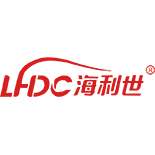throttle and clutch
Throttle and Clutch Key Components of Vehicle Control
In the realm of automotive engineering, few elements are as vital to the performance and handling of a vehicle as the throttle and clutch. These components play essential roles in the interaction between the driver and the machine, facilitating the seamless operation of cars, trucks, and motorbikes. An understanding of how throttle and clutch function, along with their interplay, is crucial for anyone interested in mastering vehicle control.
The Throttle Power and Acceleration
The throttle is a device that controls the amount of air and fuel mixture entering the engine, ultimately determining the power output and acceleration of the vehicle. When the driver presses down on the accelerator pedal, the throttle opens, allowing more air and fuel to enter the combustion chambers. This increase in combustion results in more power being generated, causing the vehicle to accelerate.
Modern vehicles typically utilize electronic throttle control (ETC), which replaces the traditional mechanical linkage with sensors and electronic controls for improved precision and response. This innovation enhances drivability, allowing for smoother acceleration and better fuel efficiency. However, the driver must understand how to modulate throttle input to maintain control, especially in situations requiring a delicate balance, such as navigating slippery surfaces or executing precise maneuvers.
The Clutch Engaging and Disengaging Gears
The clutch, on the other hand, is a critical component in vehicles equipped with manual transmissions. It serves to engage and disengage the engine from the transmission system, allowing the driver to change gears. When the driver depresses the clutch pedal, a mechanism within the clutch assembly separates the engine from the transmission, enabling a shift in gears without damaging the engine or drivetrain.
throttle and clutch

Mastering the clutch is essential for smooth driving. It involves understanding the friction point—the moment when the clutch begins to engage and the vehicle starts to move forward. Practicing clutch control is vital, especially in situations such as starting from a stop or navigating inclines, where improper usage can lead to stalling or rolling back.
The Interplay Between Throttle and Clutch
The relationship between the throttle and clutch becomes most evident during gear changes and acceleration. When a driver shifts gears in a manual transmission vehicle, the appropriate application of both the clutch and throttle is crucial for a smooth transition. Engaging too quickly can result in engine stalling, while neglecting to apply enough throttle can cause the vehicle to lose momentum.
Properly coordinating the throttle and clutch involves timing and feel. For instance, when starting from a stop, the driver must gradually release the clutch while simultaneously applying a gentle amount of throttle. This balanced approach ensures a seamless engagement, reducing wear on the vehicle's components and enhancing overall driving comfort.
Conclusion
In conclusion, the throttle and clutch are fundamental elements that significantly influence vehicle performance and driver control. Understanding how they function, as well as how they interact, is essential for anyone looking to enhance their driving skills. Whether navigating city streets or tackling challenging terrain, mastery of throttle and clutch techniques can lead to a more enjoyable and efficient driving experience. As technology continues to evolve, the principles behind these components remain foundational to the art of driving.
-
Upgrade Your Vehicle with High-Quality Handbrake CablesNewsNov.01,2024
-
Optimize Your Bike's Performance with Quality CablesNewsNov.01,2024
-
Enhance Your Vehicle's Performance with Quality Clutch ComponentsNewsNov.01,2024
-
Elevate Your Vehicle's Performance with Quality Throttle CablesNewsNov.01,2024
-
Elevate Your Vehicle's Performance with Quality CablesNewsNov.01,2024
-
Affordable Solutions for Your Cable NeedsNewsNov.01,2024
